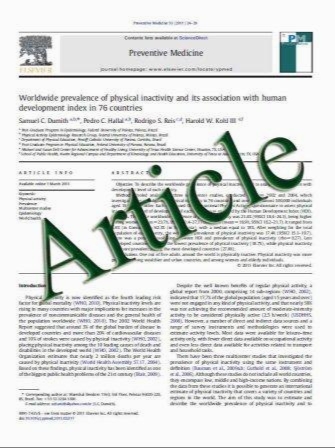Hospital Mortality of Patients with Severe Traumatic Brain Injury is Associated with Serum PTX3 Levels
- نوع فایل : کتاب
- زبان : انگلیسی
- مؤلف : Jackson da Silva Gullo • Melina More´ Bertotti • Cla´udia Carvalho Pestana Silva • Marcelo Schwarzbold • Alexandre Paim Diaz • Fla´via Mahatma Schnei
- چاپ و سال / کشور: 2011
Description
Background Traumatic brain injury (TBI) is a worldwide cause of morbidity and mortality. Pentraxin 3 (PTX3) is a humoral component of the innate immune system which has been studied as a marker of inflammatory, infections or cardiovascular pathologies. To investigate the association between serum levels of PTX3 and the hospital mortality of patients with severe TBI. Methods The independent association between serum PTX3 levels after severe TBI (Glasgow Coma Scale, GCS B 8) and hospital mortality was analyzed in a prospective study of 83 consecutive patients by a multiple logistic regression analysis. The leukocyte count in the same sample was analyzed as another marker of inflammatory response. Results The mean age of patients was 35 years and 85% were male. Serum PTX3 levels were determined 18.0 (SD ± 17.0) h after TBI. Patients who died showed a mean serum PTX3 level of 9.95 lg/ml (SD ± 6.42) in comparison to 5.46 lg/ml (SD ± 4.87) of the survivor group (P = 0.007). Elevated serum PTX3 levels remain significantly associated with mortality (P = 0.04) in the subset of patients with isolated TBI (n = 34). There were no differences in the leukocytes count measured in the same blood sample used for PTX3 determination in survivors and non-survivors (P = 0.56). The final multiple logistic regression model including age, pupillary examination, GCS, associated trauma, and PTX3 levels shows that serum levels of PTX3 which were higher than 10 lg/ml were independently associated with the patients mortality (adjusted OR 3.06, CI 95% 1.03–9.15, P = 0.04). Conclusions Serum PTX3 levels after severe TBI are independently associated with higher hospital mortality and may be a useful marker of TBI and its prognosis.
Neurocrit Care (2011) 14:194–199 DOI 10.1007/s12028-010-9462-y Published online: 23 October 2010


